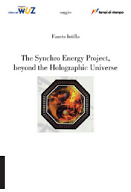(PhysOrg.com) -- Researchers at UCLA have developed a new method for producing a hybrid graphene-carbon nanotube, or G-CNT, for potential use as a transparent conductor in solar cells and consumer electronic devices. These G-CNTs could provide a cheaper and much more flexible alternative to materials currently used in these and similar applications.
Yang Yang, a professor of materials science and engineering at the UCLA Henry Samueli School of Engineering and Applied Science and a member of UCLA's California NanoSystems Institute (CNSI), and Richard Kaner, a UCLA professor of chemistry and biochemistry and a CNSI member, outline their new processing method in research published today in Nano Letters, a journal of the American Chemical Society.
Transparent conductors are an integral part of many electronic devices, including flat-panel televisions, plasma displays and touch panels, as well as solar cells. The current gold standard for transparent conductors is indium tin oxide (ITO), which has several limitations. ITO is expensive, both because of its production costs and a relative scarcity of indium, and it is rigid and fragile.
The G-CNT hybrid, the researchers say, provides an ideal high-performance alternative to ITO in electronics with moving parts. Graphene is an excellent electrical conductor, and carbon nanotubes are good candidates for transparent conductors because they provide conduction of electricity using very little material. Yang and Kaner's new single-step method for combining the two is easy, inexpensive, scalable and compatible with flexible applications. G-CNTs produced this way already provide comparable performance to current ITOs used in flexible applications.
The new method builds on Yang and Kaner's previous research, published online in November 2009, which introduced a method for producing graphene, a single layer of carbon atoms, by soaking graphite oxide in a hydrazine solution. The researchers have now found that placing both graphite oxide and carbon nanotubes in a hydrazine solution produces not only graphene but a hybrid layer of graphene and carbon nanotubes.
"To our knowledge this is the first report of dispersing CNTs in anhydrous hydrazine," Yang said. "This is important because our method does not require the use of surfactants, which have traditionally been used in these solution processes and can degrade intrinsic electronic and mechanical properties."
G-CNTs are also ideal candidates for use as electrodes in polymer solar cells, one of Yang's main research projects. One of the benefits of polymer, or plastic, solar cells is that plastic is flexible. But until an alternative to ITOs, which lose efficiency upon flexing, can be found, this potential cannot be exploited. G-CNTs retain efficiency when flexed and also are compatible with plastics. Flexible solar cells could be used in a variety of materials, including the drapes of homes.
"The potential of this material (G-CNT) is not limited to improvements in the physical arrangements of the components," said Vincent Tung, a doctoral student working jointly in Yang's and Kaner's labs and the first author of the study. "With further work, G-CNTs have the potential to provide the building blocks of tomorrow's optical electronics."
Source: University of California - Los Angeles
Transparent conductors are an integral part of many electronic devices, including flat-panel televisions, plasma displays and touch panels, as well as solar cells. The current gold standard for transparent conductors is indium tin oxide (ITO), which has several limitations. ITO is expensive, both because of its production costs and a relative scarcity of indium, and it is rigid and fragile.
The G-CNT hybrid, the researchers say, provides an ideal high-performance alternative to ITO in electronics with moving parts. Graphene is an excellent electrical conductor, and carbon nanotubes are good candidates for transparent conductors because they provide conduction of electricity using very little material. Yang and Kaner's new single-step method for combining the two is easy, inexpensive, scalable and compatible with flexible applications. G-CNTs produced this way already provide comparable performance to current ITOs used in flexible applications.
The new method builds on Yang and Kaner's previous research, published online in November 2009, which introduced a method for producing graphene, a single layer of carbon atoms, by soaking graphite oxide in a hydrazine solution. The researchers have now found that placing both graphite oxide and carbon nanotubes in a hydrazine solution produces not only graphene but a hybrid layer of graphene and carbon nanotubes.
"To our knowledge this is the first report of dispersing CNTs in anhydrous hydrazine," Yang said. "This is important because our method does not require the use of surfactants, which have traditionally been used in these solution processes and can degrade intrinsic electronic and mechanical properties."
G-CNTs are also ideal candidates for use as electrodes in polymer solar cells, one of Yang's main research projects. One of the benefits of polymer, or plastic, solar cells is that plastic is flexible. But until an alternative to ITOs, which lose efficiency upon flexing, can be found, this potential cannot be exploited. G-CNTs retain efficiency when flexed and also are compatible with plastics. Flexible solar cells could be used in a variety of materials, including the drapes of homes.
"The potential of this material (G-CNT) is not limited to improvements in the physical arrangements of the components," said Vincent Tung, a doctoral student working jointly in Yang's and Kaner's labs and the first author of the study. "With further work, G-CNTs have the potential to provide the building blocks of tomorrow's optical electronics."
Source: University of California - Los Angeles















Nessun commento:
Posta un commento